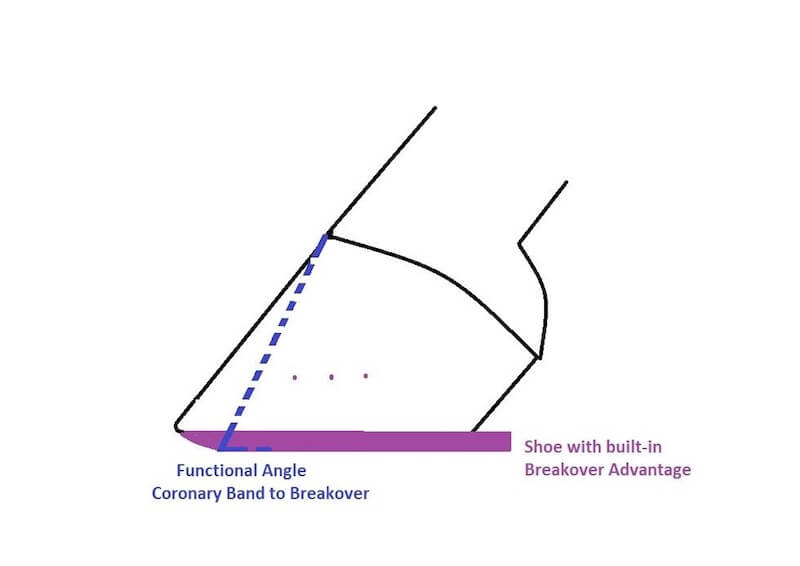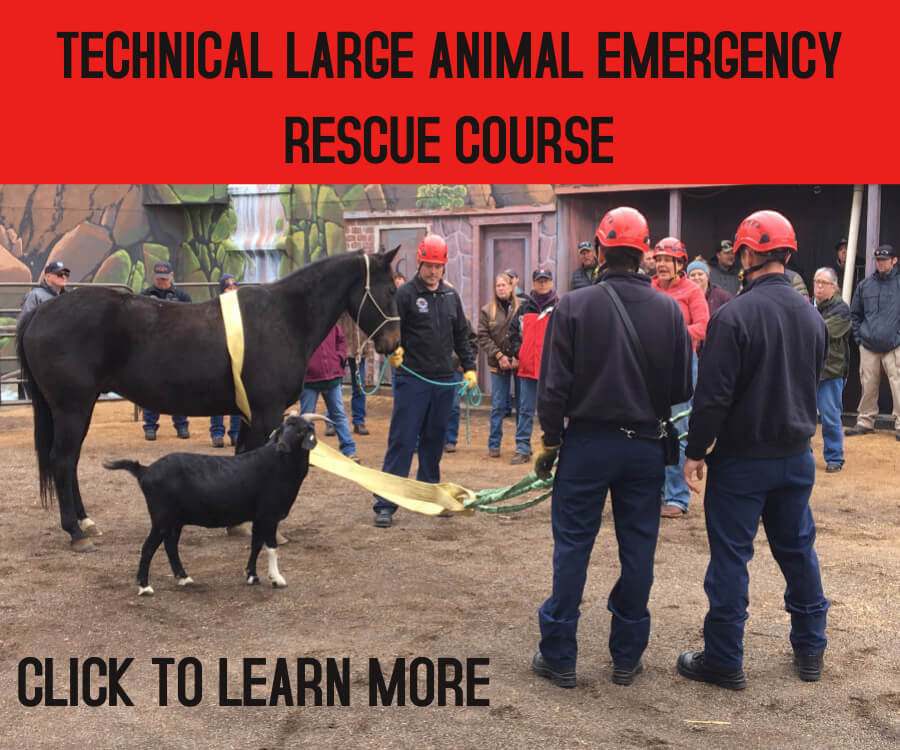Part. 4: What is Breakover?
by Mark and Karen Plumlee, Mission Farrier School
Using the principles in this 5-part series will give you the basics for evaluating your horse’s hoof health. It includes: Understanding Foot Falls, Identifying Distortion, Understanding the Sole Plane, What is Breakover?, and Load Sharing.
Breakover – Maintaining Equilibrium of the Distal Limb
“Breakover” is defined as “the pivot point for forward movement.” It is that point at which the foot rolls forward as it begins to leave the ground. To further understand this think about ski boots vs. athletic shoes. Ski boots breakover out beyond the end of our toe, athletic shoes breakover under the ball of our foot. So how does this relate to horses? As previously discussed, all feet are subject to distortion simply because they grow. As the horn grows in length, the result is not only vertical but also a horizontal extension of the toe, which initiates a leverage force that works against the equilibrium of the coffin joint, creating strain on tendons and ligaments around the joint.
Breakover, as it relates to soundness, is the act of balancing the foot with the focus of maintaining the equilibrium of the distal limb in and around the coffin joint. Many top-line issues are initiated by an inappropriate extended breakover and the leverage force it places on the front of the foot. To maintain proper balance through the top line, this equilibrium must be met.
Studies of feral horses have consistently shown that breakover occurs approximately 1” ahead of the frog apex (on a size 0-1 foot). The breakover point is determined by a strong sole callus and a rolled dorsal wall trimmed by the environment through constant movement over abrasive terrain from the first day of birth. And while it’s true that we don’t all ride feral horses, all equine feet are designed to function the same. In order to achieve optimum equilibrium around the coffin joint in our domesticated horses, we can affect breakover through an appropriate trim or shoe designed to “ease” breakover.
In a barefoot trimming application, when there is sufficient sole density, the farrier can rasp in a low roll from that point forward, unloading the wall at the toe. If there is not sufficient sole density or where a shoe is needed to meet a performance or soundness expectation, there are several shoes designed for this purpose. Every major manufacturer now produces a shoe designed to improve the equilibrium around the joint through a built-in breakover advantage.
Below are just a few examples of both front and hind pattern shoes, starting with shoes with no breakover advantage to shoes with significant breakover advantage. We should point out that a skilled farrier can modify all types of shoes to provide some easing of breakover, depending on a specific horse’s needs. Not all equine feet are created equal, and while “appropriate” breakover should be addressed in all horses, it is possible to get breakover too far back. A farrier trained in hoof mapping techniques can identify where breakover belongs.
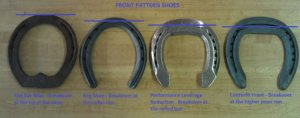
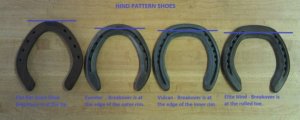 Side Note: Hoof gauges have been used to measure angles in an attempt to create “pairs of feet.” However, even though they are considered traditional tools of the trade, they fall way short as a means of balancing feet. It is my opinion that this tool, more than any other, inhibits the farrier’s ability to get equilibrium correct around the coffin joint. Of more importance is the proper placement of breakover and “functional angle,” which is defined as the angle from the coronary band to breakover. We don’t yet have a tool to measure functional angle. We just know that this angle is steeper than the hoof gauge angle, which only measures the angle of the wall at the toe. By focusing on functional angle, we can reduce excess leverage on the front of the foot without over trimming the sole.
Side Note: Hoof gauges have been used to measure angles in an attempt to create “pairs of feet.” However, even though they are considered traditional tools of the trade, they fall way short as a means of balancing feet. It is my opinion that this tool, more than any other, inhibits the farrier’s ability to get equilibrium correct around the coffin joint. Of more importance is the proper placement of breakover and “functional angle,” which is defined as the angle from the coronary band to breakover. We don’t yet have a tool to measure functional angle. We just know that this angle is steeper than the hoof gauge angle, which only measures the angle of the wall at the toe. By focusing on functional angle, we can reduce excess leverage on the front of the foot without over trimming the sole.
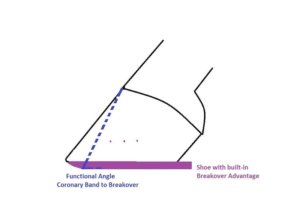
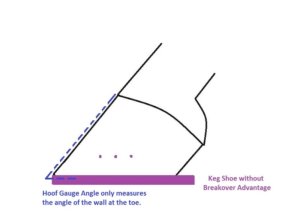 The August issue discussed the importance of watching foot falls and identifying a healthy heel first landing. September’s on-line issue talked about how to identify distortion. October’s article focused on the importance of not over-trimming the live sole. This month’s article on breakover hopefully has shown you that you can move breakover back underneath the toe which most importantly reduces distortion without over-trimming the sole, while still creating a steeper functional angle.
The August issue discussed the importance of watching foot falls and identifying a healthy heel first landing. September’s on-line issue talked about how to identify distortion. October’s article focused on the importance of not over-trimming the live sole. This month’s article on breakover hopefully has shown you that you can move breakover back underneath the toe which most importantly reduces distortion without over-trimming the sole, while still creating a steeper functional angle.
Published November 2012 Issue
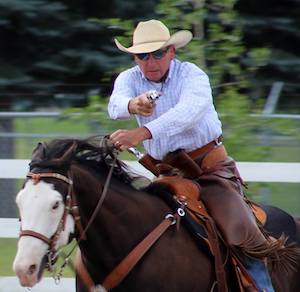
Mark Plumlee is a Certified Journeyman Farrier through the American Farriers Association, a Registered Journeyman Farrier through the Guild of Professional Farriers, and a Certified Barefoot Trimmer, Certified Farrier Practitioner and Certified Lameness Specialist through the Equine Lameness Prevention Organization. These diverse certifications speak to Mark’s commitment to the horse. Mark has published 6 educational DVDs and has been a pioneer in the advancement of farrier education for over 30 years. Mark, with his wife Karen own and operate Mission Farrier School and an Equine layup facility in Snohomish, Washington. They have graduated students from across the United States and 10 foreign countries. For more information visit http://www.missionfarrierschool.com and “Like” them on https://www.facebook.com/MissionFarrierSchool


